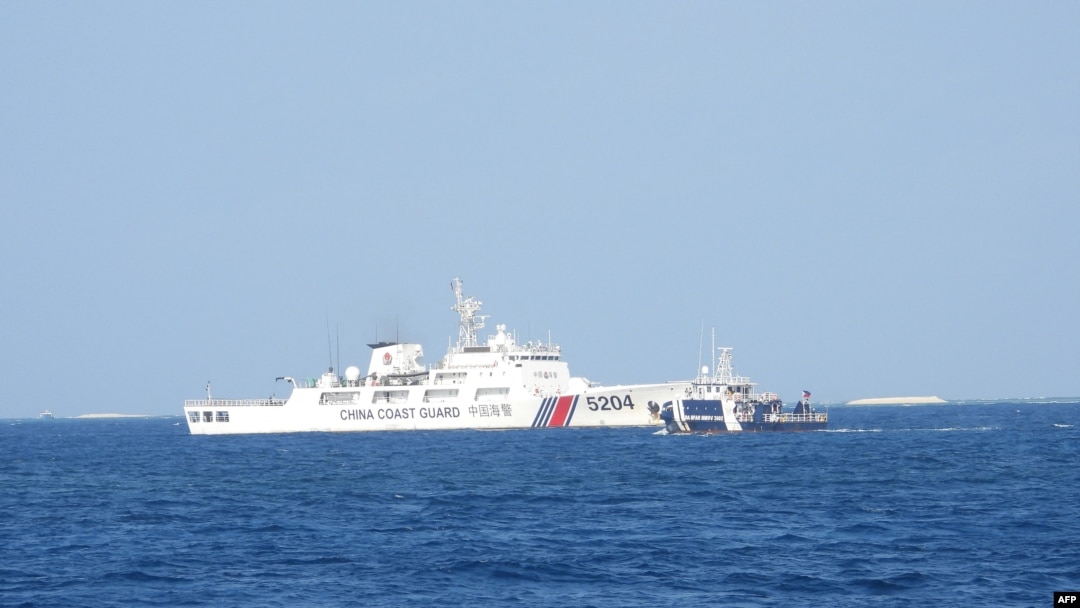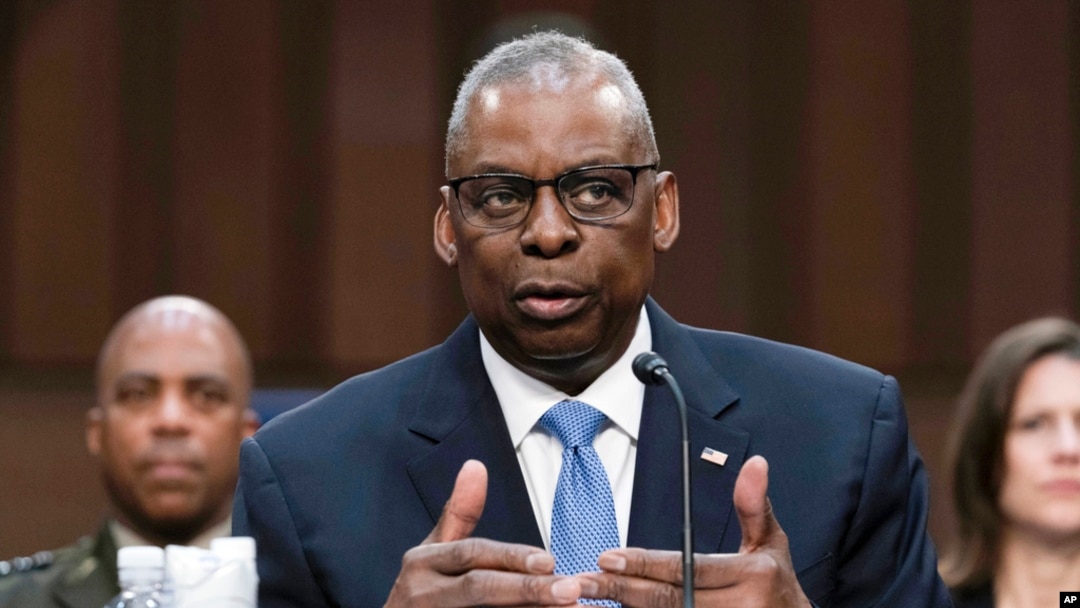U.S. Defense Secretary Lloyd Austin spoke with his Chinese counterpart on Tuesday, the first dialogue between the two countries’ defense chiefs in nearly 17 months.
The Pentagon said Austin and Chinese Admiral Dong Jun discussed “defense relations” and global security issues from Russia’s unprovoked war in Ukraine to recent provocations from North Korea. A Pentagon press release said Austin stressed the importance of “respect for high seas freedom of navigation as guaranteed under international law, especially in the South China Sea.”
Beijing has asserted its desire to control access to the South China Sea and bring Taiwan under its control, by force if necessary. President Joe Biden has said U.S. troops would defend the democratically-run island from attack.
A Chinese defense ministry statement said the Taiwan issue is "core of China's core interests.”
"The U.S. side should recognize China's firm position, respect China's territorial sovereignty and maritime rights and interests in the South China Sea, and take practical actions to safeguard regional peace," Dong said, according to the statement.
Dong also said the two countries should work to build mutual trust.
Tensions have risen between China and U.S. ally the Philippines in the South China Sea as well, with China’s coast guard using water cannons this month to threaten Filipino fishing ships. China has also used collision and ramming tactics, undersea barriers and a military-grade laser to stop Philippine resupply and patrol missions.

FILE - This photo released by the Philippine Bureau of Fisheries and Aquatic Resources on March 25, 2024 shows a Chinese Coast Guard ship blocking a Philippine ship near Thitu Island, in the Spratly Islands, in the disputed South China Sea.
A senior U.S. defense official, speaking to reporters on condition of anonymity ahead of the talks, said the call between Austin and Dong was an “important step” in keeping lines of communication open between the two military powers.
“These engagements provide us with opportunities to prevent competition from veering into conflict by speaking candidly about our concerns. That includes the PRC's behavior in the South China Sea, as well as the importance of peace and stability across the Taiwan Strait,” said the senior defense official. PRC is the acronym for the People’s Republic of China, the country’s official name.
The call marked the first time Austin has ever spoken to Dong, who has served as China’s minister of national defense since December. It also marked the first time that Austin has spoken at length with a PRC counterpart since November 2022, when he met with then-Minister of National Defense General Wei Fenghe in Cambodia.
China’s previous defense minister, General Li Shangfu, was subjected to U.S. sanctions that China deemed an obstacle to having him communicate directly with Austin. The only engagement Austin had with General Li was a handshake at the Shangri-la dialogue in Singapore last year.
The senior defense official said conversations between U.S. and Chinese defense leaders “ensure that the PRC has a clear understanding of our positions on all of the regional and global security issues.”
The talks come as the Pentagon said it had indications that a Chinese surge of weapons technology sales to Russia is helping ramp up Moscow’s defense production as it continues to attack its neighbor, Ukraine.
Pentagon press secretary Maj. Gen. Pat Ryder told reporters in response to a question from VOA Monday that China had sold “significant quantities” of machine tools, microelectronics, optics, drones and cruise missile technology to Russia, which Moscow is using to make propellants for weapons.
“So this support is actively enabling Russia's war in Ukraine and poses a significant threat to security — international security,” Ryder added.
The Associated Press reported on Friday that two senior Biden administration officials said that about 90% of Russia’s microelectronics in 2023 and nearly 70% of Russia’s machine tool imports in the last quarter of 2023 came from China. Russia used that technology to make missiles, tanks and aircraft.
Chinese and Russian entities have jointly produced drones inside Russia, and China-based companies are providing optical components for use in Russian tanks and armored vehicles, the officials also told AP.
The call between Austin and Dong is the latest in a series of recent conversations between U.S. and Chinese defense leaders. The top U.S. general, Chairman of the Joint Chiefs of Staff Gen. C.Q. Brown, spoke with his Chinese military counterpart in December.
Earlier this month, the U.S. and Chinese militaries held working-level Military Maritime Consultative Agreement talks in Hawaii for the first time since 2021.


